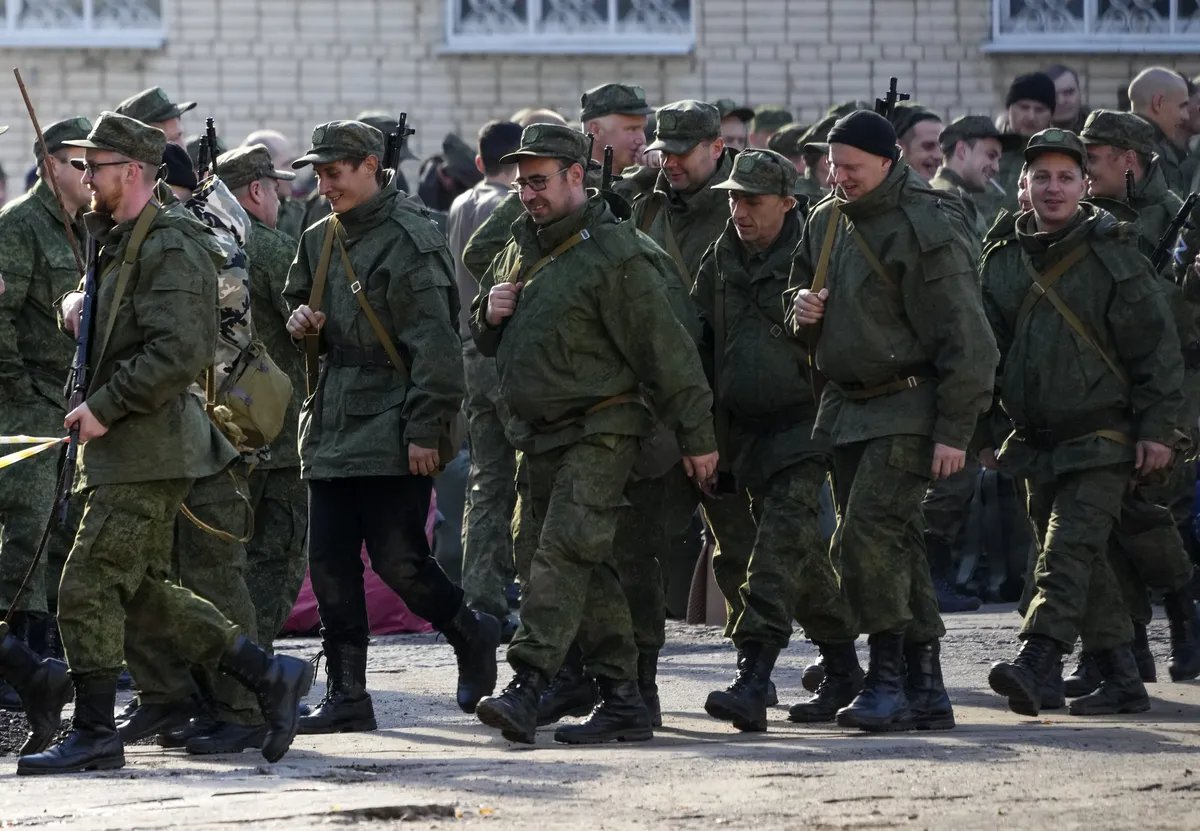Since 21 September, over 100 Russian draftees have been killed on the frontlines and on the home front, Novaya Gazeta Europe estimates. We know the names of 89 of these men. The highest number of deaths is reported in the Urals: in the Yekaterinburg region alone, at least 24 families of draftees have received death notices.

Photo by Stringer/Anadolu Agency via Getty Images
Reports of deaths among conscripts started to trickle in over the first week following the mobilisation announcement. On 27 September, it was reported that a resident of the Zvyozdny village in Kabardino-Balkaria had died. The draftee, Boris Shavayev, died at an assembly point in Ingushetia from a detached blood clot. On the next day, deaths of draftees were reported in the Zabaykalsky region and near Tyumen.
A total of 23 people died during training: this amounts to one in five deaths recorded by Novaya Gazeta Europe. The causes of their deaths vary: physical altercations, alcohol, drugs, suicide, and accidents.
By early October, reports of deaths on the frontlines had started coming in. Dmitry Sidorov and Andrey Pichuyev from Buryatia were drafted on 22 September. They were killed less than two weeks after that, on 4 October.
The highest number of deaths among conscripts was reported in the Urals. We know of 24 deceased draftees from the Yekaterinburg region, 13 from the Chelyabinsk region, and two from the Kurgan region. In some cases, they were killed just 9 or 10 days after being drafted.
Confirmed deaths of Russian draftees
Data for regions where the “partial mobilisation” was held
*Occupied by the Russian Federation The draft location of 5 deceased draftees is unknown Source: media reports
Source: media reports
Most likely, the real death toll among the draftees is much higher than our estimations. Due to the fact that in many cases, the conscripts’ families are the ones reporting their deaths, our calculations only include the deaths confirmed by the Russian Defence Ministry. As a rule, families publish information on deceased soldiers after they receive a death notice or before they organise their funeral.
Previously, deceased soldiers whose bodies remained on the battlefield were formally recognised as missing in action. After the sinking of the Moskva cruiser in April, the Russian Defence Ministry officially announced that only one sailor had been killed, despite the fact that the sailors’ families and media sources reported the death toll at about 40. The last confirmed death on the Moskva was senior warrant officer Dmitry Cheremushkin in late August.
Due to the lack of official information, relatives of deceased servicemen often find out about their deaths from their fellow soldiers. Without an official confirmation, they are not eligible for any of the pay-outs to the families of killed soldiers promised by the Russian leadership. It is unclear how many unconfirmed deaths there are among the draftees. Besides, relatives of the killed soldiers or officials sometimes do not say whether the serviceman was drafted or not, and some prefer not to make the death public at all.
Anton Borisov, a resident of the Roza settlement in Russia’s Chelyabinsk region, told his relatives that he had received a call-up card, and then went to war as a volunteer together with conscripts on 29 September. Four days later, he was sent to the front line. “They spent two nights in the Yekaterinburg region, and then they were taken to the Rostov region,” Anton’s father describes his son’s experience.
“Then he calls me on 2 October and says: ‘Dad, I won’t be calling you for a while, they’re sending us there.’ I asked him: ‘How? With no training, nothing?’ And he was like: ‘Yeah, this is how it is.’”
The men were immediately sent to the front line. “We came there, it was our first day, we hadn’t even shot our guns once. But they put us in an assault team as cannon fodder with two grenade launchers. I had to read the instruction manual on how to use them right off the weapons. On the third day, we retreated, spent a night there, then went back to our trenches,” an injured draftee from Chelyabinsk reports. Many of his fellow soldiers were killed there.
The average age of the deceased soldiers is 34 years. The oldest serviceman who died following the draft whose age we know was 48 years old. Mikhail Kulinichenko from Khakassia died “of an illness” under unknown circumstances. The youngest draftee whose death we managed to confirm is Igor Urvantsev from the Chelyabinsk region. He was only 21 years old. He leaves behind a widow and a four-months-old baby.
According to official data, a total of 82,000 draftees have been sent to the “special military operation zone” so far, out of the 300,000 drafted reservists. On 28 October, Russian Defence Minister Sergei Shoigu briefed Putin on the end of “partial mobilisation” in Russia.
Nevertheless, from a legal standpoint, the draft can still continue, as the president’s mobilisation order remains in force.
“While there is no presidential order on the end of partial mobilisation, the Defence Ministry can send in new quotas to the regions at any moment, and active draft activity will resume,” human rights defender Pavel Chikov warns.
